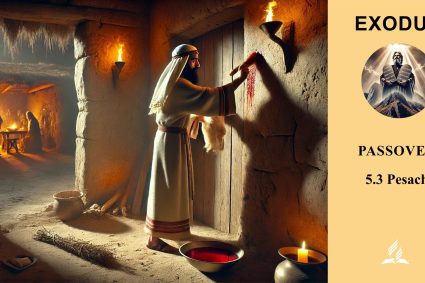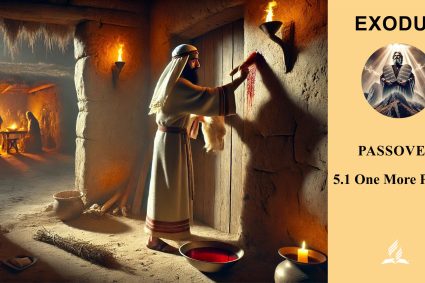


2.4 The Secret of Jesus’ Ministry
Prayer as a Source of Strength: Jesus’ Withdrawal and Focus in Ministry
Read Mark 1:35–39. What important lessons can we learn from what Jesus did here?
In Mark 1:35–39, a crucial aspect of Jesus’ ministry is revealed: His intense and persistent prayer. Jesus got up early in the morning, while it was still dark, and went to a solitary place to pray. This action underscores the central role of prayer in His life and ministry.
Important Lessons from Jesus’ Prayer:
-
Priority of Prayer:
-
Spiritual Lesson: Jesus made prayer the first priority of His day. Despite the demands of His ministry and the crowds seeking His attention, He consciously took time for prayer. This shows the importance He placed on prayer.
-
Application in Daily Life: We should also prioritize prayer in our lives. Regardless of our daily commitments, it is important to regularly spend time in prayer to strengthen our connection with God.
-
-
Silence and Solitude:
-
Spiritual Lesson: Jesus sought out a solitary place to pray undisturbed. This silence and solitude allowed Him to fully concentrate on prayer and hear God’s voice.
-
Application in Daily Life: We can look for moments of silence in our busy lives, whether early in the morning, late at night, or in a quiet place. These times of solitude are important for finding inner peace and renewal in our communion with God.
-
-
Continuity of Prayer:
-
Spiritual Lesson: The verb “to pray” is in the imperfect tense, indicating an ongoing process. Jesus did not pray just once but continuously, repeatedly.
-
Application in Daily Life: Our prayer life should also be continuous and consistent. Instead of praying sporadically, we should develop a regular prayer practice that accompanies us through all phases of life.
-
-
Source of Strength for Ministry:
-
Spiritual Lesson: Prayer was a key source of strength for Jesus’ ministry. It helped Him gain spiritual strength and wisdom for the challenges of His ministry.
-
Application in Daily Life: When we are engaged in serving others, whether in church, family, or community, we should use prayer as our source of strength. It provides us with the necessary energy and guidance to serve effectively and compassionately.
-
Summary:
Prayer was the secret to the power and success in Jesus’ ministry. His regular practice of prayer, seeking silence and solitude, and the continuity of His prayer life are essential elements that we can integrate into our own lives. By following Jesus’ example and making prayer the center of our lives, we can find spiritual strength and guidance for our daily lives and service.
Read Luke 6:12. What does this verse teach us about Jesus’ prayer life?
In Luke 6:12, we read: “One of those days Jesus went out to a mountainside to pray, and spent the night praying to God.” This verse gives us deep insight into Jesus’ prayer life and teaches us several important lessons.
Important Lessons from Luke 6:12:
-
Intensive Prayer Times:
-
Spiritual Lesson: Jesus spent the entire night in prayer. This shows the intensity and dedication with which He prayed. He used long periods of prayer to delve deeply into communion with God.
-
Application in Daily Life: We can be inspired to occasionally plan longer prayer times. These more intense times of prayer help us dive deeper into God’s presence and make important decisions with spiritual clarity.
-
-
Places of Solitude:
-
Spiritual Lesson: Jesus went to the mountainside to pray, deliberately seeking a place of solitude. This shows the importance of a quiet, undisturbed place for prayer.
-
Application in Daily Life: We should also find places of silence and solitude to spend our prayer times undisturbed. These places help us better focus on prayer and minimize distractions.
-
-
Continuity and Consistency in Prayer:
-
Spiritual Lesson: Jesus prayed not only regularly but also with consistency. Spending the entire night in prayer shows His ongoing dedication and firm belief in the power of prayer.
-
Application in Daily Life: We should develop a regular prayer practice that goes beyond routine times. Continuous and consistent prayer strengthens our relationship with God and prepares us for spiritual challenges.
-
-
Prayer as Preparation:
-
Spiritual Lesson: Jesus spent the night in prayer before making important decisions, such as choosing the twelve apostles (Luke 6:13). Prayer was His preparation for crucial moments in His ministry.
-
Application in Daily Life: We should prepare important decisions with prayer. By bringing our concerns and plans before God, we seek His wisdom and guidance, helping us make wise and well-considered decisions.
-
Application in Daily Life:
-
Intensive Prayer Times: Occasionally plan longer prayer times to delve deeper into God’s presence and strengthen your relationship with Him.
-
Places of Silence: Seek out places of silence and solitude for your prayer times to pray undisturbed and focused.
-
Regular Prayer Practice: Develop a consistent prayer practice that goes beyond routine times and integrates continuous prayer into your daily life.
-
Prayer Before Important Decisions: Prepare important decisions with prayer by seeking God’s wisdom and guidance.
Conclusion:
Jesus’ intense and consistent prayer life is a model for us. By planning longer prayer times, seeking places of silence, developing a regular prayer practice, and using prayer as preparation for important decisions, we can deepen our relationship with God and gain spiritual clarity and strength.
If Jesus needed to spend so much time in prayer, what about us? How much time should we spend in prayer? What does Jesus’ example tell us?
Jesus’ intense prayer life, as described in Luke 6:12, shows us how central and powerful prayer can be in a believer’s life. Jesus’ example teaches us several important principles about prayer and gives us insights into how much time we should spend in prayer.
Principles of Prayer from Jesus’ Example:
-
Priority of Prayer:
-
Jesus’ Example: Jesus made prayer the first priority, even when faced with many tasks and demands. He prayed early in the morning and sometimes all night.
-
Our Life: We should also make prayer a priority in our lives. It should not be something we do only when we have time but something we consciously plan and cultivate.
-
-
Regularity and Consistency:
-
Jesus’ Example: Jesus prayed regularly and continuously. His prayer life was not sporadic but consistent.
-
Our Life: We should develop a regular prayer practice. This could include daily fixed prayer times but also spontaneous prayers throughout the day.
-
-
Intensity and Depth:
-
Jesus’ Example: Jesus spent intense and long times in prayer, especially before important decisions or challenges.
-
Our Life: It can be helpful to occasionally plan longer prayer times to experience deeper communion with God and prepare for significant life events.
-
-
Prayer in Silence:
-
Jesus’ Example: Jesus sought places of silence and solitude to pray. This helped Him fully concentrate on prayer and avoid distractions.
-
Our Life: We should also find places of silence and solitude to pray undisturbed. This can help us dive deeper into prayer and hear God’s voice more clearly.
-
How Much Time Should We Spend in Prayer?
There is no fixed rule for how much time a Christian should spend in prayer, as this depends on the personal relationship with God and individual circumstances. However, Jesus’ example gives us some guidelines:
-
Daily Prayer Times: It is important to plan fixed times for prayer daily. This could be in the morning, evening, or other suitable times.
-
Longer Prayer Times: Occasionally, we should plan longer prayer times, especially when facing important decisions or seeking spiritual renewal.
-
Continuous Prayer: Paul encourages us to “pray without ceasing” (1 Thessalonians 5:17). This means staying in constant connection with God and praying throughout the day.
What Does Jesus’ Example Tell Us?
Jesus’ prayer life shows us that prayer is not a duty but a source of strength, guidance, and communion with God. If Jesus, the Son of God, needed to spend so much time in prayer to fulfill His mission, how much more should we cultivate prayer in our lives? It reminds us that our spiritual life and service are strengthened and guided through prayer.
Conclusion:
Jesus’ example challenges us to reflect on and deepen our own prayer life. By making prayer a priority, praying regularly and intensely, and seeking places of silence, we can strengthen our relationship with God and recognize His guidance in our lives.

Practical Implementation in Daily Life:
-
Daily Prayer Times: Set fixed times for prayer in your daily schedule. This could be in the morning, evening, or other suitable times.
-
Longer Prayer Times: Occasionally plan longer prayer times, especially before important decisions or when seeking spiritual renewal.
-
Places of Silence: Find quiet places where you can pray undisturbed. This can help you focus better on prayer and experience deeper communion with God.
-
Prayer Before Important Decisions: Prepare important decisions with prayer. Bring your concerns to God and seek His wisdom and guidance.
Summary:
Prayer was the secret to the power and success in Jesus’ ministry. His regular practice of prayer, seeking silence and solitude, and the continuity of His prayer life are essential elements that we can integrate into our own lives. By following Jesus’ example and making prayer the center of our lives, we can find spiritual strength and guidance for our daily lives and service.
Conclusion:
Jesus’ intense and consistent prayer life is a model for us. By planning longer prayer times, seeking places of silence, developing a regular prayer practice, and using prayer as preparation for important decisions, we can deepen our relationship with God and gain spiritual clarity and strength.

Prayer is the source of our spiritual strength and guidance; let us, like Jesus, pray regularly and intensely to be fulfilled in our service and daily life.
(Visited 17 times, 1 visits today)




















